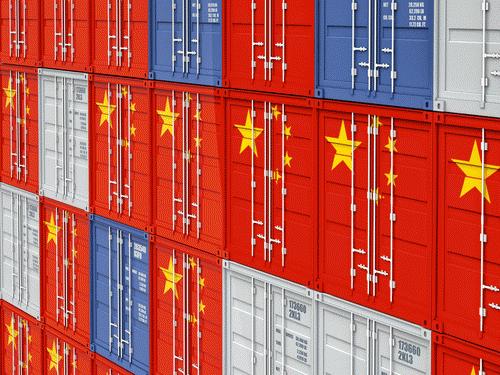Reprinted from Counterpunch
He came, he saw, and he pocketed all the deals that matter. Chinese President Xi Jinping's tour of Southwest Asia -- Saudi Arabia, Iran and Egypt -- could easily be sold anywhere as your typical Chinese-style win-win.
On the PR arena, Xi did a sterling job polishing China's image as a global power. Beijing scored diplomatically on all counts, obtaining several more layers of energy security (over half of China's oil come from the Persian Gulf) while expanding its export markets and trade relations overall.
In Iran, Xi oversaw the signing of 17 politico-economic agreements alongside Iran's President Hassan Rouhani. Yet another diplomatic coup: Xi was the second leader of a UN Security Council member country to visit Tehran after the nuclear deal struck in Vienna last summer; the first was President Putin, in November. Note the crucial Russia-China-Iran interaction.
To make it absolutely clear, Xi issued a statement just before arriving in Tehran, confirming Beijing's support for Iran to join the Shanghai Cooperation Organization (SCO). That will solidify for good the key strategic partnership trio working for future Eurasia integration.
Of course, this whole process revolves around One Belt, One Road -- the official Chinese denomination of the larger-than-life New Silk Road vision. No other nucleus, apart from Russia-China, offers so much potential in terms of bilateral cooperation; Iran, as much as during the ancient Silk Road uniting imperial China and imperial Persia, is the ultimate hub uniting Asia with Europe.
Xi's high-tech caravan stopped first in Saudi Arabia and Egypt -- the Arab world. Xi's message could not be more crystal-clear: "Instead of looking for a proxy in the Middle East, we promote peace talks; instead of seeking any sphere of influence, we call on all parties to join the circle of friends for the Belt and Road initiative."
As Xi was still in Arab land, Beijing officially issued an "Arab policy paper"; a first, tracing the history of China-Arab world interaction from the ancient Silk Road up to the founding of the Sino-Arab State Cooperation Forum in 2004. And even before addressing the -- fractured -- Arab League in Cairo, Xi emphasized it once again; what matters for China is win-win cooperation all around.
Translation: business, business, business. And no Chinese interference in fractured Middle East politics.
Xi's diplomatic offensive, a spin-off of One Belt, One Road, seeks no less than reconfigure the Non-Aligned Movement (NAM) -- for which China is a global champion -- in the context of emerging new financial architecture, centered on the globalization of the yuan.
That includes the push for the yuan to become one of the world's reserve currencies; and mechanisms such as the Asian Infrastructure Investment Bank (AIIB) and the Silk Road Fund, much more attuned to the needs of the developing world than the IMF, the World Bank and even the Asian Development Bank (ADB).
A win-win for China as far as the Arab Middle East is concerned implies the pricing of key commodities in yuan -- a long-term but essentially inevitable development. And Beijing is eyeing not only Saudi Arabia but the whole GCC (Gulf Cooperation Council) -- which happens to be a de facto financial centre for Africa, where China has a massive presence, with Eastern Africa on top of it being linked to the Maritime Silk Road.
The boom, and its drawbacks
Post-sanctions Iran, already in overdrive, is all about (re)integration into large swathes of the global economy. Yet China was already in Iran even before the lifting of sanctions.
Iran wants to increase its petrochemical output, by 2025, to 180 million tons. Chinese investment will be key. According to a recent report by global energy, metals, and mining research and consultancy Scottish group Wood Mackenzie, Iran may attract as much as $70 billion for its petrochemical projects.
On the alternative energy front, Iran has the capacity to generate 40,000 megawatts (MW) of electricity from solar and wind resources. Chinese companies will definitely be on it.
(Note: You can view every article as one long page if you sign up as an Advocate Member, or higher).






